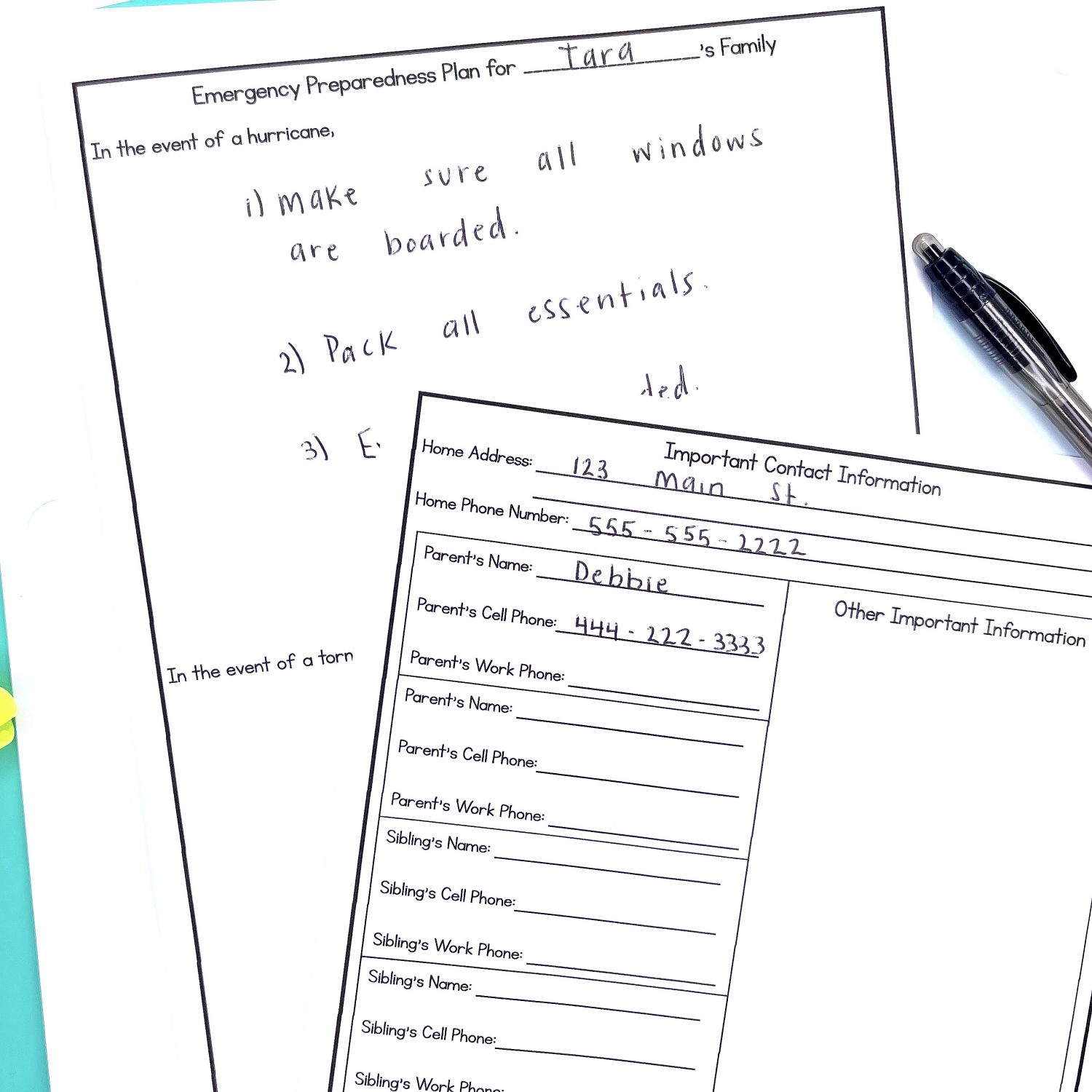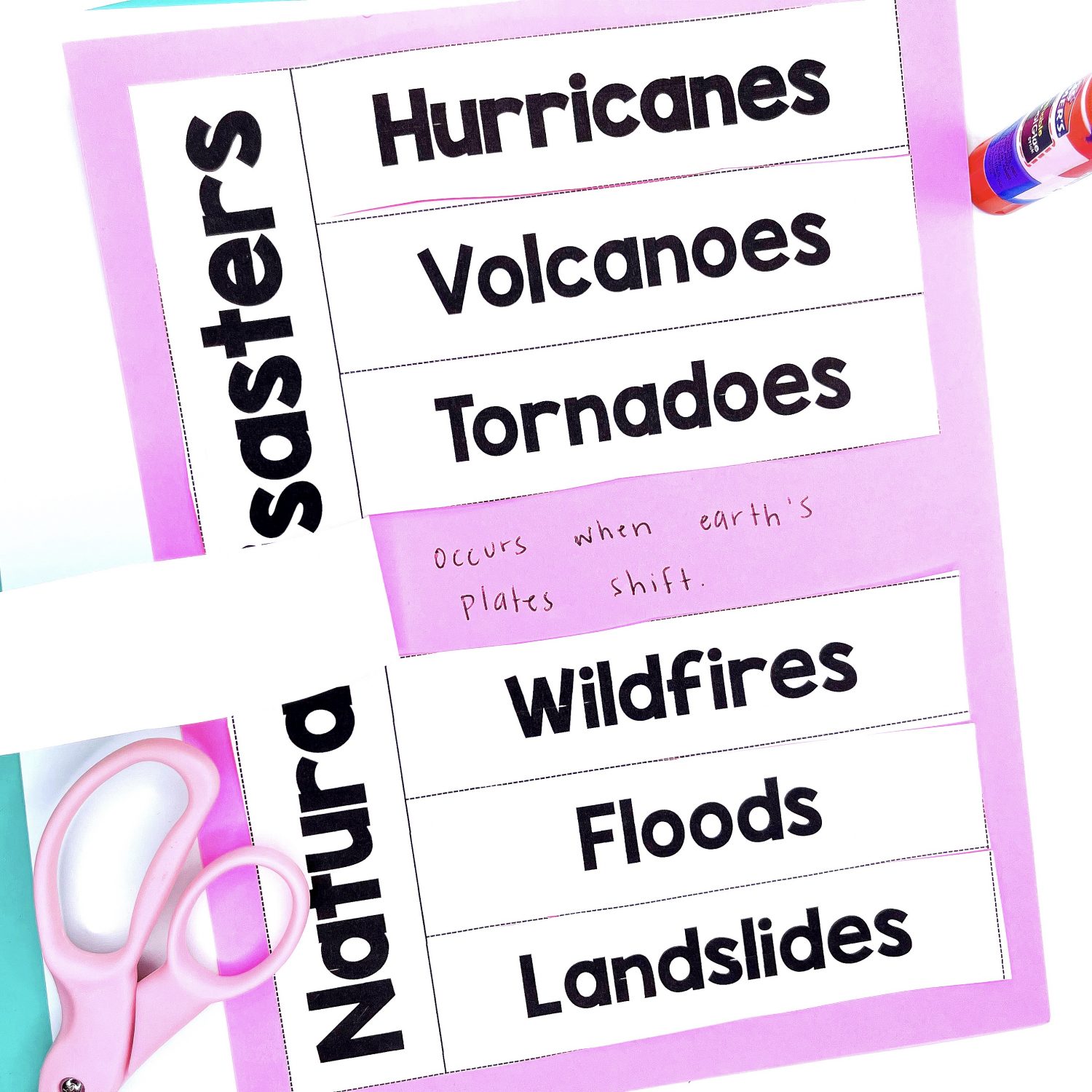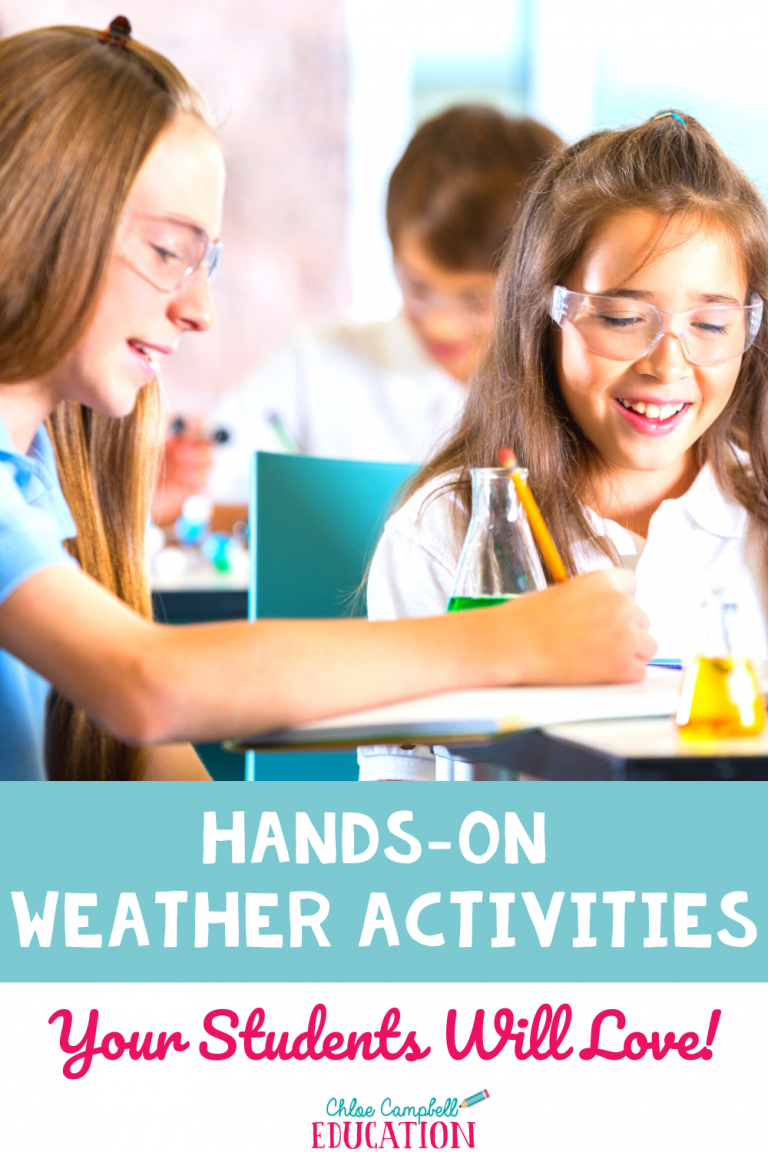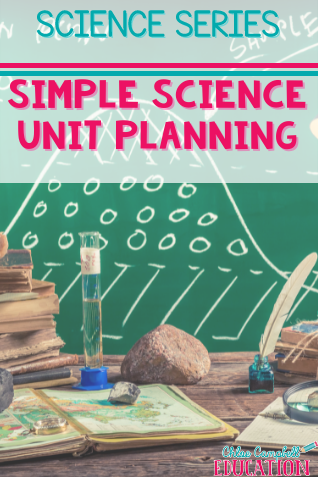5 Tips For Teaching Natural Disasters To Engage Students
Natural disasters are an important part of many science curriculums, especially for 3rd, 4th, 5th, and 6th-grade students. Kids enjoy learning about natural events like tornadoes, floods, and wildfires. But how can you make learning about these often tragic events both engaging and educational? Here are some tips for teaching natural disasters that will help your students stay on task and informed.

How To Teach Natural Disasters
No matter what classroom or school district you are in, there’s always a potential threat of a natural disaster in your area—whether it’s a flood, hurricane, or tornado. Children need to learn about each type of disaster, what causes them, and how to be prepared in the event of a natural disaster. This is a great way to introduce topics like emergency plans, first responders, and recovery efforts.
Fortunately, science curriculum standards often include these topics in 4th and 5th grades, giving teachers a chance to dive deep into these subjects with engaging activities and projects. From reading passages to hands-on activities, your students can learn a lot while building a sense of control over these extreme weather events.
Tips For Teaching Natural Disasters
There are plenty of natural disaster teaching resources available to educators. But what are some of the best ways to teach these topics? Here are 5 tips for teaching natural disasters to your students:
Tip #1: Use Informational Texts
Informational texts are key when teaching about natural disasters. They not only help students learn about catastrophic events like earthquakes, floods, and volcanic eruptions but also improve their comprehension skills. Using grade-level appropriate texts about recent natural disasters—like Hurricane Ian or the impact of wildfires—can make the subject matter more relatable and accessible.
This can be especially helpful when integrating literacy and science, making it a great cross-curricular lesson plan. For example, you might use a graphic organizer to help students break down the causes of floods or the shape of volcanoes. This will ensure that students not only understand the science behind these events but also how to process and analyze the information. Head over to this blog post to read about some great ways you can do it!
This one seems like a no-brainer, but finding enough informational texts on each natural disaster can quickly waste your prep time. Just think, there are over 6 major natural disasters: floods, hurricanes, volcanoes, tornadoes, earthquakes, landslides, and more. Imagine how long it will take to find a grade-level appropriate reading for each one on the internet or in your library!
Using already created 5th-grade level resources can be helpful. I’ve got resources ready for you!
This Natural Disasters resource includes so many amazing on-level information texts for your lesson plans:
- Natural Disasters Mind Map
- Hurricanes Informational Text
- Volcanoes Informational Text
- Tornadoes Informational Text
- Earthquakes Informational Text
- Wildfires Informational Text
- Floods Informational Text
- Landslides Informational Text
There are so many great informational texts available to you, but why spend the whole day looking and reading when you can easily grab over 10 different natural disaster texts right here?
Tip #2: Make It Relatable
One of the most important tips for teaching natural disasters is to make the material relatable. Ask students, “Are you prepared for a disaster?” This question helps them think critically about what they would do in an emergency situation. Discussing events like Hurricane Katrina or forest fires can help them connect the material to their own experiences and understand how families and community members react when a natural disaster strikes.
Having students create an emergency kit or emergency contact list is a fun way to teach them about disaster preparedness. They can research natural hazards in their region—like house fires in dry areas or landslides in mountainous regions—and think about how they would respond.
This resource includes everything you need to help your students figure out natural disaster preparedness.
- Emergency Preparedness Plan
- Emergency Contact List
Now, when anyone asks one of your students how to prepare for an emergency, they are definitely going to know. Grab it here!
Tip #3: Use Science to Teach Literacy
Science and literacy go hand in hand, offering an accessible way to build important reading skills while exploring the natural world. Use high-interest non-fiction texts about natural events like small avalanches or tectonic plates to get students excited about reading. Pair these texts with activities like “Annotate the Text” or use a graphic organizer to map out the information.
This approach not only helps students learn about the scientific topics you’re covering, but it also allows them to practice critical thinking and analysis—skills that are useful across all subjects.
Using these high interest texts about natural disasters, your students will be able to practice many skills like:
- How to Mark the Text Bookmark
- How to Annotate the Text Bookmark
- 7 Graphic Organizers:
- Main Ideas with Text Evidence
- Ideas with Text Evidence
- Central Ideas with Details
- Main Idea with Details, Main Idea, Details, Conclusion
- KWL
- Overview: Topic, Author’s Purpose, Key Vocabulary, Most Important Thing, I wonder, Important Facts, Illustration
- Context Clues (3 versions: 3 words, 4 words, 5 words)
These can all be found in my Natural Disasters Close Reading Activities. I have a whole blog post on how you can integrate literacy and science here!
Tip #4: Use Graphic Organizers And Discussion
Using graphic organizers is one of my favorite tips for teaching natural disasters. They help students organize the details of each disaster, which can otherwise get confusing. A foldable or graphic organizer for each type of disaster—like volcanoes, earthquakes, and hurricanes—can help students track what makes each one unique.
Class discussions are also invaluable. Encourage students to share their own experiences or stories they’ve heard from family members or seen on social media. This helps them connect to the material and makes the learning process more engaging. It also provides a safe space for students to express their emotions about these events, which can be important for those who have lived through disasters themselves.
These foldables, graphic organizers, and discussion cards are included in my natural disasters unit activities.
Tip #5: Play A Game
Games are always a great way to engage students, no matter their grade level. Use a science board game as a way to review everything your students have learned about natural disasters. A well-designed game can make topics like the climate crisis, radar stations, and water gauges feel interactive and fun.
This approach works well in a science center, during small group instruction, or even as a way to practice for tests. It’s a fun way to reinforce what they’ve learned while also building community resilience through teamwork and problem-solving.
You can also use this science game as a spiral review throughout the year. It can be a fun test prep review, too! Your students will love completing this science board game while mastering the content standards along the way.
Tips For Teaching Natural Disasters: The Wrap-Up
When teaching about natural disasters, it’s crucial to keep lessons engaging and hands-on. This allows students to connect with the material on a personal level while learning about important topics like disaster planning and recovery efforts. Whether you’re using informational texts, creating emergency plans, or playing a game, these tips for teaching natural disasters can make a big difference in your classroom.
Don’t Forget!
Here are all of the resources mentioned in this blog post:
Natural Disasters Close Reading Activities
Natural Disasters and Severe Weather Unit
Need to save this post for later? Click the image below to pin this to your favorite Pinterest board!












